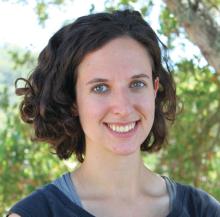The first signs are always vague. Katie (not her real name) was 33 years old and loved to spend her weekends hiking. First, it was fatigue when doing elevation. Then fatigue even while walking across flat ground. One day she just sat in bed and noticed her heart racing.
One blood test, and her primary care doctor called her at home with the results. Go to the emergency room, she said. Katie’s red blood cells were dangerously low. She would need a blood transfusion.
Something was wrong, but the list of possibilities remained broad. Someone in the emergency room tossed out the word “leukemia.” Katie froze. She liked the resident who tossed out “internal bleeding” better.
This was the start of the ups and downs; the good news and bad news; the branch points that opened and closed her future.
The hematologist-oncologist came by. You need to be admitted to the hospital, and we need to do a bone marrow biopsy, she told Katie. It could be – and then the word was said again – this time by a specialist, making it all the more real: leukemia.
Katie had a few days to sit with this. The bone marrow biopsy was done. Now, what type of leukemia? She read on her computer. She knew there were lots of kinds, some better than others. Now, she was praying for a “good” cancer.
It was one of the bad ones. But.
We sent off additional molecular and genetics testing from your bone marrow, the doctor explained. This type of leukemia can be divided into three groups: high risk, standard risk, and low risk. All the signs so far point to low risk. This is good news, Katie thought.
Six days later. The final cytogenetics came back. Actually, Katie had a rare mutation that automatically put her in the high risk category. It meant she would definitely need a bone marrow transplant to be cured. Bad.
And so she underwent induction chemotherapy. The nurse posted a big calendar on her wall and filled it with her daily blood counts. The counts are dropping, Katie noted. This is good, right? It means the leukemia is responding to chemo? Yes. Good news.
Four days later. The blast count in her blood crept up. It could be anything. It could be reactive. It doesn’t necessarily mean refractory leukemia. But. It’s bad news.
In the interim, some more testing came back. You have one sister, right? Sharon? Yes, Katie confirmed. Looks like Sharon is a perfect match for a bone marrow transplant. Katie cried. Such good news.
Two weeks later the next bone marrow biopsy was done. This shows how you responded to the chemotherapy, the doctors explained. Will it be in remission? Will it be refractory? It’s in remission. Wow, good news.
But the window to transplant is small. In the few weeks to get there, another test came back. Even though the cancer is technically in remission, you have something called minimal residual disease. Meaning there are small amounts of leukemia left over. We should bridge with more chemo before transplant.
Was this good news? Bad news? Who knew anymore?
It’s well known in the hematology and oncology world that – even with advanced disease and poor prognoses – patients with blood cancers are less likely to see palliative care than patients with solid tumors. At conferences and in academic journals, leaders in the field expound on why this may be. One reason is the inability for most hospice agencies to offer blood transfusions. That’s certainly a big piece.
Then there’s Katie. When Katie was diagnosed, she asked me what stage her cancer was. It’s a question I hear a lot. With leukemia, I explained, we don’t think about staging the same way we do for conditions like breast cancer or prostate cancer. Since it’s in the blood, it’s stage 4 by definition, I said, but that doesn’t mean anything about prognosis. Our model of thinking is fundamentally different.
With a solid stage 4 cancer, there is generally no chance for cure. The goal is stabilization: We want to keep the cancer where it is for as long as possible. A stable CT scan, in which the disease burden is identical to 3 months before, is a success. The difference between good news and bad news is in lifespan. Receiving bad news is the difference between projecting 2 years and 6 months to live.
With a stage 4 blood cancer like Katie’s leukemia, there is generally a chance for cure. The goal is to make the cancer disappear completely and have someone live a normal lifespan. The outcomes are binary. The difference between good news and bad news is not a difference in lifespan, but a difference in probability of cure. Receiving bad news is the difference between an 80% chance of cure and a 20% chance.
Whenever I order chemotherapy, the electronic record prompts me for my intent: Is this palliative or curative intent? I always type curative intent. The intent is curative until we choose to stop pursuing cure.
Grappling with uncertainty is an enormous challenge for anyone after a diagnosis of cancer. Not knowing whether cure is even possible makes it that much more complex. The outcomes are as diverse as can be. The next branch point can literally be the difference between no more cancer and no more options.
Which raises the question, at what point – if any – should we have asked palliative care to see Katie? I wish we would have done it sooner, not because patients like Katie won’t be cured, but to help them sit with the toughest of uncertainties; prepare for it; live in it as best as possible.
As I write this, Katie is undergoing a bone marrow transplant from her sister, the match. In a few weeks she will face her next branch point – whether the transplant worked. It will move her closer or further from a cure.
Dr. Yurkiewicz is a fellow in hematology and oncology at Stanford (Calif.) University. Follow her on Twitter @ilanayurkiewicz and listen to her each week on the Blood & Cancer podcast.



